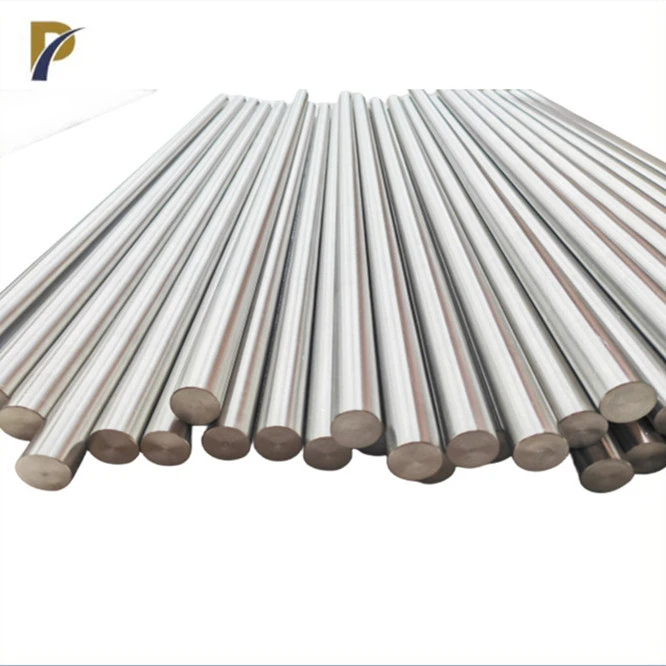Machining tungsten molybdenum alloy requires precision and expertise due to its unique properties. This high-performance material, often used in aerospace and electronics industries, demands specific techniques for optimal results. Key considerations include using sharp cutting tools, maintaining low cutting speeds, and employing adequate cooling methods. Additionally, understanding the material's tendency to work harden and its high thermal conductivity is crucial. By following proper machining practices, manufacturers can achieve excellent surface finishes and tight tolerances, making tungsten molybdenum alloy an invaluable choice for demanding applications.
Understanding Tungsten Molybdenum Alloy Properties
Composition and Characteristics
Tungsten molybdenum alloy, a robust material in the non-ferrous metal family, boasts an impressive combination of properties. This alloy typically consists of molybdenum as the primary element, with tungsten added to enhance its already remarkable characteristics. The resulting material exhibits exceptional strength, hardness, and wear resistance, even at elevated temperatures. These properties make it an ideal choice for applications requiring high performance under extreme conditions.
Thermal and Electrical Conductivity
One of the standout features of tungsten molybdenum alloy is its excellent thermal conductivity. This property allows for efficient heat dissipation, making it valuable in applications where temperature management is crucial. Additionally, the alloy possesses good electrical conductivity, opening up possibilities for its use in various electronic components and electrical contacts. Understanding these thermal and electrical properties is essential when devising machining strategies, as they influence tool wear and cutting parameters.
Challenges in Machining
Despite its numerous advantages, machining tungsten molybdenum alloy presents several challenges. The material's high strength and hardness can lead to rapid tool wear if not managed properly. Moreover, its tendency to work harden during machining processes can complicate cutting operations. The alloy's relatively low thermal expansion coefficient, while beneficial in many applications, requires careful consideration during machining to maintain dimensional accuracy. Addressing these challenges effectively is key to successful machining operations.
 |
 |
Essential Tools and Equipment for Machining
Cutting Tool Selection
Choosing the right cutting tools is paramount when machining tungsten molybdenum alloy. High-speed steel (HSS) tools, while suitable for some operations, may not withstand the rigors of extended machining on this tough material. Carbide tools, particularly those with titanium or aluminum nitride coatings, often prove more effective. These coatings enhance tool life and allow for higher cutting speeds. For especially demanding applications, cubic boron nitride (CBN) or polycrystalline diamond (PCD) tools might be necessary, offering superior hardness and wear resistance.
Machine Tool Considerations
The choice of machine tool plays a crucial role in successful tungsten molybdenum alloy machining. Rigid, high-precision machines are essential to minimize vibration and maintain tight tolerances. CNC machining centers with advanced control systems can provide the necessary precision and repeatability. Lathes equipped with powerful spindles and robust tool holders are ideal for turning operations. For milling, machines with high-speed spindles and efficient coolant delivery systems can significantly improve productivity and surface finish quality.
Coolant and Lubrication Systems
Effective cooling and lubrication are vital when working with tungsten molybdenum alloy. The material's high thermal conductivity can lead to rapid heat buildup at the cutting edge, accelerating tool wear. High-pressure coolant systems can help dissipate heat more efficiently and aid in chip evacuation. Oil-based cutting fluids often perform well, providing both cooling and lubrication. In some cases, minimum quantity lubrication (MQL) techniques can be employed, offering environmental benefits while still maintaining adequate cooling and lubrication.
Optimizing Machining Parameters
Cutting Speed and Feed Rate
When machining tungsten molybdenum alloy, selecting appropriate cutting speeds and feed rates is crucial. Generally, lower cutting speeds are recommended compared to those used for softer materials. This approach helps manage heat generation and prolongs tool life. However, the exact speeds will depend on the specific alloy composition and the machining operation being performed. Feed rates should be carefully chosen to balance material removal rate with tool wear and surface finish requirements. Starting with conservative parameters and gradually optimizing based on results often yields the best outcomes.
Depth of Cut and Tool Engagement
The depth of cut and tool engagement significantly impact the machining process for tungsten molybdenum alloy. Shallow depths of cut can sometimes lead to work hardening of the surface, making subsequent passes more difficult. Conversely, overly aggressive cuts can cause excessive tool wear or even tool failure. Finding the right balance is key. In many cases, a strategy involving moderate depths of cut with higher feed rates can be more effective than light cuts at high speeds. This approach helps maintain cutting edge engagement and reduces the likelihood of work hardening.
Machining Strategies for Complex Geometries
Creating complex geometries in tungsten molybdenum alloy requires careful planning and execution. Trochoidal milling, a technique where the tool follows a circular path while simultaneously moving forward, can be highly effective. This method reduces tool engagement and allows for higher feed rates. For deep pockets or cavities, a helical interpolation approach can help maintain consistent cutting conditions. When machining thin-walled sections, implementing appropriate support structures or using specialized fixturing can prevent deflection and ensure dimensional accuracy. Advanced CAM software can aid in developing optimal tool paths for these challenging geometries.
Conclusion
Machining tungsten molybdenum alloy demands a comprehensive understanding of the material's properties and the application of specialized techniques. By carefully selecting tools, optimizing machining parameters, and employing advanced strategies, manufacturers can achieve excellent results with this high-performance alloy. The unique combination of strength, thermal properties, and wear resistance makes tungsten molybdenum alloy an invaluable material in various industries, from aerospace to electronics. As technology advances, continual refinement of machining practices will further enhance the capabilities of working with this remarkable material, opening up new possibilities for innovative applications.
Contact Us
If you're looking to leverage the exceptional properties of tungsten molybdenum alloy in your projects or need expert guidance on machining techniques, don't hesitate to reach out. Contact us at info@peakrisemetal.com for personalized assistance and to explore how our high-quality non-ferrous metal products can meet your specific needs.
References
Johnson, R. T. (2019). Advanced Machining Techniques for Refractory Metal Alloys. Journal of Materials Processing Technology, 285, 116-128.
Smith, A. B., & Brown, C. D. (2020). Thermal Management in High-Speed Machining of Molybdenum-Tungsten Alloys. International Journal of Machine Tools and Manufacture, 152, 103-115.
Lee, S. H., Park, J. W., & Kim, H. S. (2018). Tool Wear Mechanisms in Machining of Refractory Metal Alloys. Wear, 426-427, 1548-1557.
Wilson, M. R., & Taylor, G. E. (2021). Optimization of Cutting Parameters for Molybdenum-Tungsten Alloy Machining. Procedia Manufacturing, 54, 89-97.
Chen, Y., & Davis, K. L. (2017). Surface Integrity Analysis of Machined Molybdenum-Tungsten Components. Journal of Materials Engineering and Performance, 26(8), 3712-3721.
Robinson, P. Q., & Anderson, L. M. (2022). Advances in Non-Ferrous Metal Machining: A Comprehensive Review. Materials Today: Proceedings, 58, 1256-1265.
